
What is deep work? Your easy-to-digest guide
Your guide to deep work – the skill that productivity writer Cal Newport calls the “superpower for the 21st Century”. If you can master the art of deep work, you’ll be more productive, happier, and a lot more employable
Modern work doesn’t lend itself to ‘deep work’ – you can thank the endless distraction of the internet, email and instant messaging for that.
Whereas you might like to think you spend your days using your brainpower to do great things, in practice for many knowledge workers, work means answering messages, going to meetings, and a futile attempt to clear an ever-growing list of banal to-dos.
So what is deep work, and why has it become such an urgent topic of conversation in productivity and wellness circles? Let’s get into it.
What is deep work?
Deep work is work that requires your distraction-free focus. It’s work that taxes your brain just the right amount. And it’s work that actually makes a difference – whether that’s delivering a meaningful project in your job or work that takes your personal development to a new level.
Doesn’t that sound great? Does it relate to your actual work life? If not, the four rules for deep work below are for you!
The term deep work was coined by computer science professor Cal Newport. In his book Deep Work: Rules for Success in a Distracted World, Newport defined deep work as…
“Professional activities performed in a state of distraction-free concentration that push your cognitive capabilities to their limit. These efforts create new value, improve your skill, and are hard to replicate.”
Cal Newport and deep work
Seeing as Cal Newport invented the term ‘deep work’, and wrote a book about it, it’s only fair that you check out what he’s getting at.
First, let’s establish his credentials.
Who is Cal Newport?
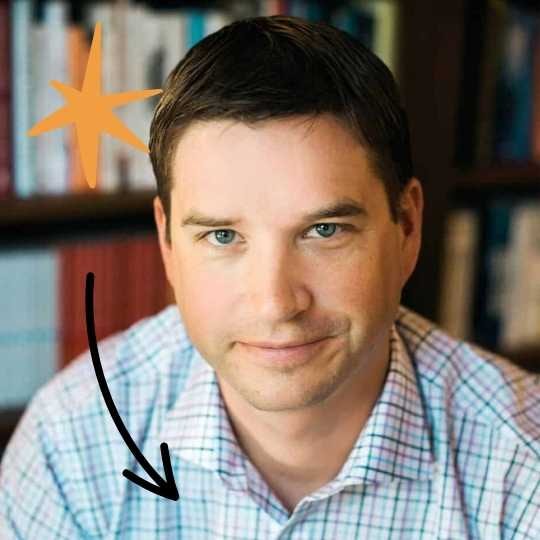
On top of being a computer science professor at MIT, he’s a prolific writer on the topic of productivity and success. His first few books focused on being a top student (How to Win at College, How to Become a Straight-A Student, How to Be a High School Superstar).
He then turned his attention to work and lifestyle, with books such as So Good They Can’t Ignore You, Digital Minimalism, Deep Work, and most recently A World Without Email (we know, quite the bold idea).
He’s got multiple New York Times bestsellers to his name. He’s a contributing writer for The New Yorker (where he once namechecked FLOWN, swoon!). He also runs a podcast called Deep Questions, and has consistently written on his Study Hacks blog since 2007.
On top of that, he holds down his job as a professor, publishing academic papers like they’re going out of fashion. (Were academic papers ever in fashion? Not sure, but you get what we mean).
So, Cal Newport knows a thing or two about being productive, and getting stuff done.
Deep Work: the central hypothesis
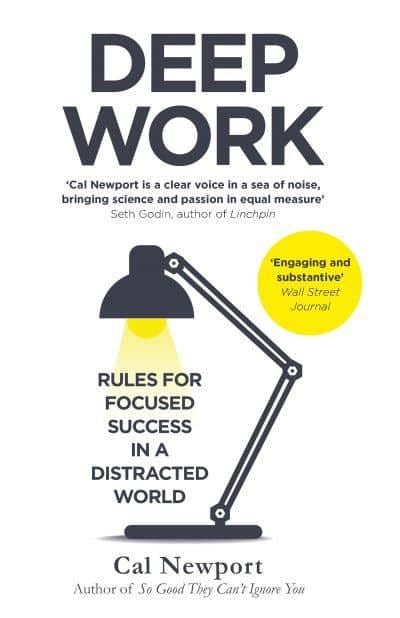
The central hypothesis of Deep Work is a call to arms for knowledge workers who want to get on in their careers, and have a better relationship with work.
“The ability to perform deep work is becoming increasingly rare at exactly the same time it is becoming increasingly valuable in our economy,” writes Newport. “As a consequence, the few who cultivate this skill, and then make it the core of their working life, will thrive.”
What does this mean?
It means that we live in a distraction economy. The biggest companies in the world – Meta, Instagram, Google – are spending zillions of dollars with the sole purpose of distracting you. They hire the best brains straight out of college to find increasingly sophisticated ways to get your attention.
At the same time, the world of work is becoming increasingly distracting. We’ve all embraced technology, particularly during the pandemic and in the post-lockdown era. But this means that our attention is regularly hijacked, thanks to the little green ‘Available’ sign on all our work apps.
In this context, it’s a wonder that anybody gets anything meaningful done at all. Indeed, many workers feel constantly overwhelmed and consumed by their inbox. Do you get to the end of the day and feel like you’ve been working non-stop with nothing to show for it?
When Cal Newport says “the few who cultivate this skill [deep work], and then make it the core of their working life, will thrive”, he’s looking at you.
Deep work versus shallow work
We’ve already told you Newport’s definition of deep work:
“Professional activities performed in a state of distraction-free concentration that push your cognitive capabilities to their limit. These efforts create new value, improve your skill, and are hard to replicate.”
So what is the opposite of deep work? Shallow work. Over to Cal…
“Shallow Work: Noncognitively demanding, logistical-style tasks, often performed while distracted. These efforts tend to not create much new value in the world and are easy to replicate.”
How do you feel about your days at work now you’ve read these definitions?
Shallow work isn’t just the opposite of deep work. It’s also its arch enemy. Because while you’re engaged in shallow work, you cannot begin to think about deep work. That work that’s going to make you feel good, and might even advance your career? It’s not going to happen.
Newport writes in Deep Work that modern work is conditioning you to live in a cycle of shallow work and shallow distraction.
“In an age of network tools…knowledge workers increasingly replace deep work with the shallow alternative—constantly sending and receiving email messages like human network routers, with frequent breaks for quick hits of distraction.”
It’s a bleak outlook. But the benefits of retraining your mind for deeper work are immense. Indeed, FLOWN has created a load of tools purely to help frazzled knowledge workers do just that.
The benefits of deep work

Let’s forget the doom and gloom. Embracing a deep work lifestyle is absolutely doable for you. And it brings a host of benefits.
Do more in less time
According to one seminal study at the University of California, it takes 23 minutes to recover your focus after a distraction. Consider how many times you’re distracted in a day. The implication is horrifying for a messaging-addled knowledge worker.
In a typical seven-hour working day, it would require 18 distractions to prevent you spending any time whatsoever focused on a task.
Extrapolated like this, it explains how you can go a day working full pelt with nothing to show for it at the end.
What’s the flipside? If you can learn to block out distractions, you’ll be streets ahead of your peers when it comes to focusing and making progress on your projects.
You’ll be prioritizing the work that makes a difference, rather than spending your days responding to messages and your evenings trying to catch up on the meatier pieces.
TIP: Use an app such as Freedom to block distracting websites and apps on all your devices. FLOWN members get a great deal on Freedom through our member perks.
Achieve better quality of work
A by-product of the banishment of distraction is better quality of output. If you’re a ‘knowledge worker’, you’re paid for your knowledge – your ability to think critically and solve problems.
Shallow work means you don’t get the mental space and actual time to deliver any critical thinking or problem solving.
Committing to deep work means you’ll actually deliver on your remit – and you’ll be demonstrating your value to whoever marks your homework, be that your client, your boss, your editor or your team.
Enhance your career with deep work
This is what Cal Newport means when he says that deep work is “becoming increasingly rare at exactly the same time it is becoming increasingly valuable”.
If you, as a knowledge worker, repeatedly deliver better output as a result of your commitment to deep work, you’ll be noticed. You’ll also be forgiven for setting your status as ‘Do Not Disturb’ for several hours a day.
Deep work and wellness
Quite apart from your performance at work, deep work is a recipe for feeling better about your life. Constant distraction is stressful. It triggers the fight, flight or freeze response in your brain and makes you feel like you’re getting nowhere (because you are getting nowhere).
A deep focus on an absorbing task is central to a human being’s feeling of fulfilment. The highest human need in Maslov’s hierarchy of needs is self actualization – “the desire to become the most that one can be”. Deep work enables you to do this.
And, Mihaly Csikszentmihalyi’s work on Flow is also tied closely to deep work. A ‘Flow state’ according to Csikszentmihalyi is: “A state in which people are so involved in an activity that nothing else seems to matter; the experience is so enjoyable that people will continue to do it even at great cost, for the sheer sake of doing it.”
The emotional health benefits of a deep work life are obvious. So, let’s look at how you can adopt deep work as your way of being.
Drumroll please, here are Cal Newport’s four rules for a deep work life.
Rule #1: Learn how to do deep work

The first thing you need to do to be able to adopt a deep work lifestyle is to learn how to do it. There are many inspirational people for you to learn from – not just Cal Newport.
However, Cal defines a couple of ‘approaches’ you can adopt when you want to knuckle down to deep work. Which one you choose will depend on your personality, the time you have and the kind of work you do. Here they are…
The Monastic approach to deep work
The monastic approach means to go all in. If you’re really convinced of deep work’s value for your life, then adopt this approach. Dedicate nearly all your work hours to working deeply, and minimize the drain of shallow tasks on your time.
This approach has undeniable merits. It could work well for you if you
Work for yourself on solitary tasks, e.g. writing or academic theory
Are senior enough in your work to be able to delegate all shallow tasks
Aren’t dependent on other people to hit your goals
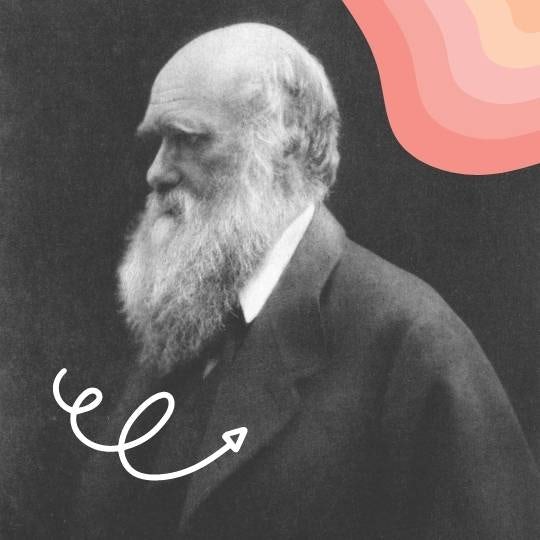
For example… Consider Charles Darwin. While developing the ideas for The Origin Of Species, Darwin had a strict workday ritual that involved early morning walks, several intense hours alone in his study, and time set aside to catch up on his mail. He’d then take a lengthy walk to mull over challenging ideas, and clock off early.
The Bimodal approach to deep work
To go bimodal is to divide your time between deep work and shallow work. You could divide your time in a variety of ways, depending on your commitments.
The Bimodal approach could work well for you if you
Have a predictable schedule, for example in academia
Have a predictable split between deep and shallow tasks
Do solitary creative work that requires you to work in long bursts, with long breaks for inspiration and recharging
For example… Isabel Allende, once called “the world's most widely read Spanish-language author”, is famed for her practice of carving out time in January of every year to start a new novel. “It’s a superstition, but it’s also discipline. I really need to organize my life around the writing, so during the first months of the year, I don’t travel, I don’t have any social life, I don’t lecture anywhere. I just write.”
The Rhythmic approach to deep work
For most knowledge workers, this might seem the most manageable route to doing more deep work. The rhythmic approach is to ensure you carve out repeatable time every day to do deep work.
For example, if you manage a team in a big company, you could organize all your meetings and correspondence to take place every morning, leaving the afternoons free to concentrate on your more cognitively challenging work.
The rhythmic approach would work for you if…
You have a lot of shallow work competing for your attention
You rely on collaboration and cross functional communication to get things done
You’re starting out with deep work and need to learn to focus
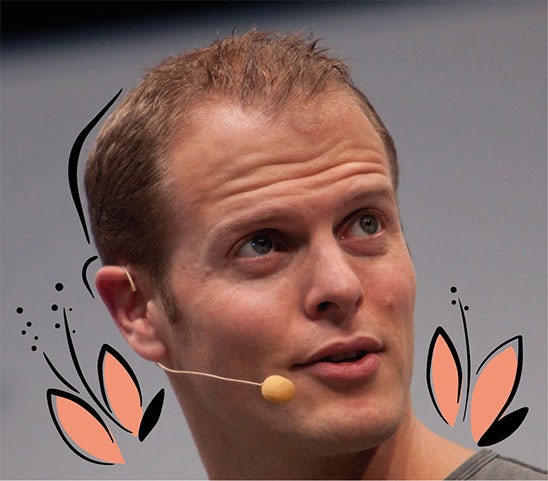
For example… Entrepreneur, blogger and podcaster Tim Ferriss recommends checking email only twice a day – essentially batching your shallow work into manageable chunks of time. He also recommends sending email at a different time to reading them, in order to break the cycle of instant responses. Clever.
The Journalistic approach to deep work
This approach to deep work closely resembles how journalists, particularly news journalists, have to work. News journalists are required to spend a lot of time chasing down stories. Speaking to sources. Organizing interviews. Traveling.
When a news journalist has their story, they must focus – they must sit down and write it fast, so that they can file it with their editor, and their editor can publish it before their competitor gets the story out first.
This is the journalistic approach to deep work – it’s the ability to fit focus into a busy schedule.
Of course it doesn’t just apply to journalists. The journalistic approach could work for you if…
You’re writing a book or launching a side hustle while holding down a day job
Your job requires a huge amount of shallow work
You’re good at switching your focus on when you get the opportunity

For example… Booker Prize winner Bernardine Evaristo has spoken about her need to write in bursts, interspersed with walks, cycling, swimming, “siesta-ing”, and her various other professional commitments.
Ritualize and embrace implementation intentions
“[Great creative minds] think like artists but work like accountants.” So says New York Times columnist David Brooks. He’s talking about ritual – repeatable actions you take and conditions you manufacture to get you into the deep work groove.
Consider things like:
Where you’ll work and for how long. Garden shed or swanky meeting room – a room of one’s own is an important part of your deep work ritual
How you’ll prove to yourself that you’re working hard enough. Whether it’s words written per minute or a total ban on internet use, be clear with yourself so you don’t waste mental resource asking yourself if you’re really deep working
What you need to support your work. Start with a good cup of coffee. Ensure the lighting is exactly as you like it. Do 50 pushups after each 50-minute stint. Whatever works for you – make sure you do it.

For example… Maya Angelou's work was underpinned by simple but strict rituals and a deep work approach. She had a room reserved for writing (which had just a bed, desk, Bible, dictionary, deck of cards and a bottle of sherry). After her 6am coffee, she'd work uninterrupted into the afternoon.
Ritual also feeds a practice called ‘implementation intention’. An implementation is a stated goal that goes super specific. For example:
“On Tuesday at 10am I will go to my local coffee shop, where I will spend two hours writing a blog post from start to finish.”
This is much more powerful than the looser intentions we’re all guilty of setting, for example:
“Today I’ll spend a bit of time thinking about next week’s blog post, and I’ll make a start on it and see where I get to by lunchtime.”
The good news about setting implementation intentions is that it doubles or even triples your chances of success (depending on which scientific study you read). So, making implementation intentions a part of your deep work ritual is a wise move.
The grand gesture
This is kind of the opposite of ritual. The grand gesture is a jolt from your day-day-day – such as locking yourself in a cabin in the woods for a week in order to finish writing your book.

It sounds extreme, but a surprising number of notable thinkers use the grand gesture to help them get things done. For example…
Bill Gates is among the most famous. His ‘think weeks’ are the stuff of Microsoft legend. He takes himself to a cabin in the woods somewhere in the Pacific Northwest. Laden with papers and proposals from his team, he disconnects from the outside world and reads.
In the early 20th Century, Swiss psychiatrist Carl Jung was busy changing the way the world thinks about psychology. Retreat was central to the success of his ideas. He built a two-story hideaway in the Swiss countryside, and escaped his hectic schedule in Zurich to focus on the development of the school of thought we now call ‘analytical psychology’.
Meanwhile, owner of California-based marketing agency Wayward Kind, Jules Taggart takes a workcation every four to six months. Each trip has offered an important space in which to think and create, on one occasion leading her to rearrange her entire client workflow. “It allows me to do a little more dreaming about the trajectory of the whole business,” she says.
So why does the grand gesture work? Here are some reasons:
Novelty: A change is as good as a rest. And in the context of getting deep work done, a novel environment, picked for the sole purpose of deep work, can make you more inclined to knuckle down
Investment: Couple novelty with an investment of your time and money, and the incentive to focus on the task at hand is magnified
Time pressure: Couple investment with time pressure, and your time blocks take on a new urgency. Giving yourself 24 hours to finish a presentation is one thing. But giving yourself 24 hours in an expensive hotel to finish the presentation will have a supercharging effect on your focus.
Behave like a high-performing company
One of the most intriguing recommendations in Cal Newport’s book is the idea that, as an individual, you should “execute like a business”.
What does he mean? Well, high-performing companies tend to do certain things, such as…
Prioritize ruthlessly
Act on ‘lead measures’
Measure success meaningfully
Hold workers to account for their output
Indeed, these four things are Newport’s steps for executing your deep work life as though you were a business.
“Focus on the wildly important”
Businesses use frameworks such as OKRs and KPIs to focus efforts around a short list of vitally important outcomes.
The implication of this for you as an individual is pretty clear. Focus on specific, ambitious goals and choose what you focus on accordingly. This loops tantalizingly back to the idea we talked about at the start – that deep work is your key to getting noticed for your work.
“The more you try to do, the less you actually accomplish.”
Chris McChesney, Jim Huling, and Sean Covey, The 4 Disciplines of Execution
“Act on the lead measures”
A high-performing business understands the difference between ‘lag’ and ‘lead’ measures – and you should too.
Lag measure: a measure of a desired outcome – for example, you might want to get more visitors to your blog.
Lead measure: a measure of the activity that will contribute to success in the lag measure. For example, how often you publish a blog post, your SEO performance, and your ability to get social shares
The key difference is that you can act on the lead measures to influence your performance on the lag measures. If you only look at lag measures, you’re always too late to take action.
Your deep work practice should take this into account. The hours you spend writing blog posts each month is a far more useful measure, because you can act upon it to achieve more visitors.
“Keep a scoreboard”
A high-performing business is transparent about performance and champions progress for all to see.
As an individual, you should follow that lead. Everybody likes to tick things off lists. Keeping a tally of your hours in deep work focusing on the wildly important goals will keep your efforts front of mind and allow you to visualize your improvement over time.
“Create a cadence of accountability”
A high-performing business holds its people to account – and you can do this as an individual.
With your lead metrics and your scorecard, you must regularly review your progress.
Recognise and celebrate your successes
Review challenges and plan for the next sprint
FLOWN and accountability go hand in hand. Our deep work sessions give you supportive accountability from the FLOWN community. Share your intentions and settle down to work – you’ll be amazed at the difference it makes to your deep work habit.
Try a FLOWN accountability session now
Rule #2: Make friends with boredom

You live in a world in which boredom has been replaced by everyday technology. Low-level boredom is no longer something you have to endure. If you’re waiting for a bus, or in the dentist’s waiting room, and you feel a pang of boredom, what do you do?
You take your smartphone out of your pocket, right?
Your smartphone means you can replace low-level boredom with low-level stimulation whenever you want. And most of us do exactly that.
This seems pretty harmless. But Cal Newport argues that by eradicating boredom from your life, you’re impacting your ability to concentrate. Once your brain has got used to on-demand distraction, it gets addicted, to the point that you can’t concentrate even if you want to.
The word ‘addicted’ is key, because many people talk about distraction like alcoholics talk about drinking. “I can stop whenever I want if I want to.”
But science pours cold water on the view that when push comes to shove, smartphone-addicted people can still switch on their ability to focus. Clifford Nass was a Stanford communications professor who studied behavior in the digital age. In 2010, he told NPR that constant attention switching has a “lasting negative effect on your brain”.
“People who multitask all the time can’t filter out irrelevancy. They can’t manage a working memory. They’re chronically distracted. They initiate much larger parts of their brain that are irrelevant to the task at hand… they’re pretty much mental wrecks.”
Nass’s research shows that people who have replaced boredom with distraction might be scuppering their ability to focus in the longer term.
Not only that, there's evidence to suggest that boredom is an important part of spurring your creativity to arrive at better ideas.
So what can you do if you’ve already wired your brain to crave distraction? Luckily, Cal Newport has some strategies.
“Don’t take breaks from distraction. Instead take breaks from focus”
One of the most-quoted statements from Deep Work, the idea is that you make focus your default way of being.
Why? Because taking the occasional break from your phone or the internet might make you feel good for a bit, but if you spend the rest of your day succumbing every time your brain craves distraction, a short digital detox isn’t going to make any difference to the wiring of your brain.
Newport argues that the best way to change the way your brain works so it’s more compatible with deep work is to schedule time to be distracted. The rest of the time, focus on your focus.
How might this work in practice?
Schedule time blocks during which you’re allowed to use the internet
The rest of the time, focus on deep work
If a task requires the internet, resist. Make progress without using the internet, then in your next internet time block, fill in the blanks.
Sounds a bit extreme? Newport argues that this level of discipline is the best way to eradicate your cravings for low-level, low-effort digital stimulation.
Advantages of this approach:
Breaking the rule will simply see you lapse into distraction-addicted behavior. For example, if you need to just get a snippet of information from an email in your inbox for a task. Getting that information will involve going to your inbox, and unavoidably seeing new messages that arrived since you last looked. Banishing the internet removes the temptation to read them and respond to them!
It can enhance your social and family life too. We all crave greater presence and meaning in our social lives – and the smartphone is a major blocker. Remove the temptation and you’ll be enhancing your ability to focus as well as the quality of your relationships.
It’s a long-term strategy. Learning to focus without distraction will chip away at all the negative effects of distraction addiction, and help you cultivate that deep work skill.
What if my job requires me to be online?
Simply schedule more internet-connected time blocks. The key is to schedule them and stick to them.
“The challenge for a human now is to be more interesting to another than his or her smartphone.”
Deep work might just be your company's competitive advantage.
Embrace intensity
Newport cites the example of Theodore Roosevelt. While at uni at Harvard, Teddy took part in everything from boxing to dance classes. He was so busy that there weren’t that many hours in the day left for studying.
And yet he still achieved high academic performance thanks to his intensity, according to his friends at the time.
How can you cultivate such intensity in your worklife?
There’s a popular productivity hack: estimate the time needed to complete a task. Then halve it. Put that ambitious timeblock in your diary, and get to work. Why does this work? Three good reasons…
With an ambitious time block, your brain will be forced to try every strategy at its disposal to produce the work. You may find your mind innovates!
There won’t be time to give into negative thoughts. Self doubt, and the procrastination that tends to follow, won’t be an option.
You’ll have no choice but to banish distraction for the duration of your time block. If you want to embed deep work in your life, this is a fine shortcut.
Apply the practice of mindfulness to your cognitive problems
If you’ve ever tried mindfulness meditation, you’ll know that the practice involves focusing your attention on your breath or some other part of your bodily experience. This is with a view to centering your attention in the present moment, so that you can begin to live in the present rather than constantly thinking about the past or the future.
Some people find mindfulness a bit ‘woo’, but there’s a wealth of scientific evidence that shows mindfulness’s effectiveness in improving your ability to pay concentrate.
Cal Newport advocates a similar practice, designed to enhance your ability to do cognitively hard things. Here’s his approach to “meditating productively”.
Find a time block where your body is occupied but your mind is not – for example commuting, walking, cleaning
Consider a challenging work problem while you do this activity – perhaps you’re turning over a marketing strategy in your mind, or you’re building a team
Each time your mind wanders (“which it inevitably will” as they say on Headspace), gently bring your attention back to your problem
Be aware that your mind’s tendency will be to go over again and again what you already know. Each time you notice this is happening, think about the next step – what you need to solve to make progress.
Cal Newport says that this is about brain training. “I’m not…suggesting this practice for its productivity benefits (though they’re nice),” he writes in Deep Work. “I’m instead interested in its ability to rapidly improve your ability to think deeply.”
Rule #3: Get off social media

Cal Newport has a pretty brutal approach to what he calls “network tools”. This is a guy who’s written a book called A World Without Email, remember.
Why get off social media?!
Social media, in his view, is a lamentable drain on depth. And while the advice to quit it entirely seems a bit scary to most people, social media’s impact on mental health and productivity are pretty well documented.
Cal Newport frames the debate by talking about “tool selection”. Often, we justify our use of social media by saying “it’s a tool that keeps me connected to old friends”, or “it’s a tool that tells me what’s going on in the local area”.
Newport suggests that there are two approaches to tool selection:
The ‘any benefit’ approach
The ‘craftsman’ approach
And he believes the ‘any benefit’ approach is flawed.
Quoting Deep Work:
“The Any-Benefit Approach to Network Tool Selection: You’re justified in using a network tool if you can identify any possible benefit to its use, or anything you might possibly miss out on if you don’t use it.”
As opposed to:
“The Craftsman Approach to Tool Selection: Identify the core factors that determine success and happiness in your professional and personal life. Adopt a tool only if its positive impacts on these factors substantially outweigh its negative impacts.”
How do I get off social media?
It’s all very well to decry social media as a modern evil, but how do you glean yourself away from it? Here are a couple of ideas (from Cal, from FLOWN, and from others).
The 20-second rule
Devised by Shawn Achor, author of The Happiness Advantage, the 20-second rule is about making it 20-seconds harder to act on a bad habit, and 20-seconds easier to act on a good habit.
So, if you want to go for a run every morning, you might sleep in your running clothes.
If you want to quit social media, there are plenty of actions you could take to make it 20 seconds harder to indulge in social media.
Remove apps from your phone
Log out of Facebook on your computer so you have to login every time you want to check it
Leave your phone in the kitchen when you’re watching TV in the evening
Switch your phone off when you’re out with a friend
Take an elongated social media detox
This is less about ‘going cold turkey’ and more about assessing your need for social media. If you commit to a few weeks or a month without social media, you might find that you have less of a need for it than you realize.
Does FOMO really matter to you that much if you actually live the ‘missing out’ part? Does anybody notice that you haven’t posted a picture of your breakfast lately? If the answer is no, you might be fine to step back from social media and reclaim some of your attention.
Replace the activity with something else
Everybody knows that if you want to stop snacking on junk food, you need to have a lot of carrot sticks in the house, and zero chocolate.
The same is true for social media. Place a book or magazine you want to read in every room of your house. Every time you feel the urge to check your phone, read a page of the book instead.
Remember what we said about getting comfortable with boredom? An alternative would be to replace your social media time with mindful boredom.
“Your actions are a consequence of your thoughts.
Your thoughts are a consequence of what you consume.
And in the modern age, what you consume is largely a consequence of how you select and refine your social media feed.
Choose better inputs. Get better outputs.”
Rule #4: Reject shallow work

For most people, eliminating shallow work altogether isn’t a realistic goal.
Most of you wouldn’t last too long in your job if you never looked at your email or refused to attend operational meetings.
But, there are things you can do to minimize the impact shallow work has on your ability to work more deeply. Here are some of Cal’s ideas.
Schedule your day around deep work
Do you schedule your day around your deepest tasks? You’re probably doing the opposite. Most knowledge workers try to schedule their actual work around plentiful shallow commitments – back to back meetings, email correspondence, organizing teams.
Trying to ‘fit in’ deep work around such trivialities is impossible. So, Cal Newport recommends blocking your day out, putting chunks of deep work in first. Some people use their digital calendar, Cal Newport uses a lined notepad with a line for every 30-minute slot.
You’ll have to accept that it’ll move around as the day progresses. That’s fine. The approach is about being intentional with your time, rather than tying you up in time-blocked knots.
Become hard to reach
There’s a little bit of mischief in this approach, but don’t be fooled. Becoming hard to reach is a clever deep work hack.
It involves breaking some deep-set conventions about how digital communication is used in the workplace. Remember, Cal Newport’s follow up to Deep Work was A World Without Email…
Ways to change your email habits to enable your deep work:
Set expectations. An autoresponse to incoming email can help your sender understand what you’re trying to achieve. It can also tell them how long they should expect to wait for a response and conditions in which they won’t get a response.
Be ‘process centric’ when you email. Avoid getting embroiled in open-ended, “what are your thoughts?” email threads. Identify the issues that an email thread is about, and drive the conversation to a conclusion. A good way to do this is to make clear, specific proposals in your correspondence. Before you hit send, check your words for anything that might lead to another question. You want to avoid that!
Don’t automatically respond to everything. If an email doesn’t interest you, doesn’t relate directly to your job, doesn’t support what you’re trying to achieve, or doesn’t have clear proposals for yo uto respond to, ask yourself what would happen if you didn’t respond. It’s uncomfortable for knowledge workers trained to route conversations back and forth, but if you make your default response a non-response, you might train your contacts to be more discerning with their requests.
Newport takes a hard line with email and “network tools”. It’s empowering to read. But if it seems too scary for you to implement fully, just bearing these approaches in mind can gradually improve your relationship with the default tools that so damage your ability to deep work.
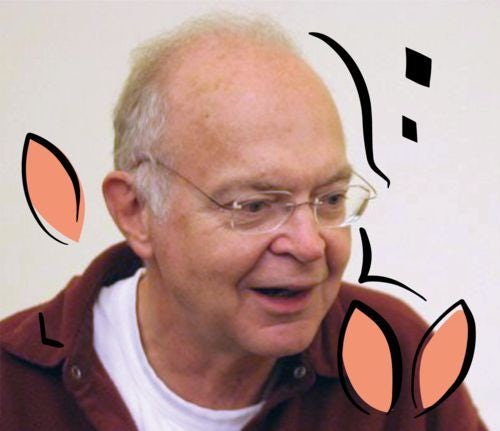
One of the legendary figures in computer science, Donald Knuth, hasn’t used email since 1990. His focus on learning and understanding computer science means he ruthlessly eliminates trivial tasks. “What I do takes long hours of studying and uninterruptible concentration,” he says.
Meanwhile, Nobel Prize winning physicist Richard Feynman embraced the mischief in becoming hard to reach. To avoid the burden of administrative work, he once said he simply tells everyone that he doesn’t do anything. “If anyone asks me to be on a committee … I tell them I’m irresponsible,” he said.
All set for a deep work life?
Hopefully, this guide has helped to demystify the concept of deep work, and given you some ideas for implementing the principles into your own work life.
The most important takeaway? Deep work is about productivity. But it’s about so much more. You’ll spend around 90,000 hours at work over the course of your lifetime. That’s roughly a third of your time alive.
Developing a positive, satisfying relationship with work has far-reaching implications for the quality of your life. The deep work principles outlined in this guide could be the difference between a decent career, and a work life that gives you joy and a sense of achievement every day.

Deep work Q&A
How much deep work can you do in a day?
Four hours. Being engaged in deep work is cognitively exhausting, and your willpower to keep at it is finite. According to a review of studies by Anders Ericsson, four hours is a workable maximum for most adults. Try to cram in more, and tiredness plus your waning willpower is likely to trip you up.
What is a deep work session?
A deep work session is simply a time block that you set aside for a deep work task. You would be wise to switch off any notifications on your phone and computer so you can focus.
It’s also good to stock up on healthy snacks and water, and make sure the tools you’ll need to progress are to hand.
You don’t want anything to interrupt your flow.
You can setup this kind of deep work session by yourself. Or, join one with FLOWN. Called Flocks, our online co-working sessions help you focus through peer accountability and expert facilitation. Try one out today.
How long should a deep work session be?
You can’t focus all the time. Trying to concentrate deeply for too long leads to ‘inattentional blindness’, where you fail to notice important details and start to make more mistakes.
There is some debate about the optimum length for a deep work session.
Many people love the ‘Pomodoro technique’, in which you focus in short bursts like this:
25 minutes focus
5 mins break
After the fourth 25-minute focus, you take a longer break of 15 minutes.
Cal Newport recommends that to get anything meaningful done requires periods of between 90 minutes and 120 minutes of focus.
Meanwhile, an analysis using the DeskTime productivity tracking app in 2014 found that the most productive employees took 17-minute breaks for every 52 minutes of work.
At FLOWN, our deep work sessions last between one hour and two hours. We aim for 50 minutes focus at a time, followed by a 5 minute break. This draws on a range of research – and we like to encourage our deep work community to take regular breaks to recharge their waning focus.